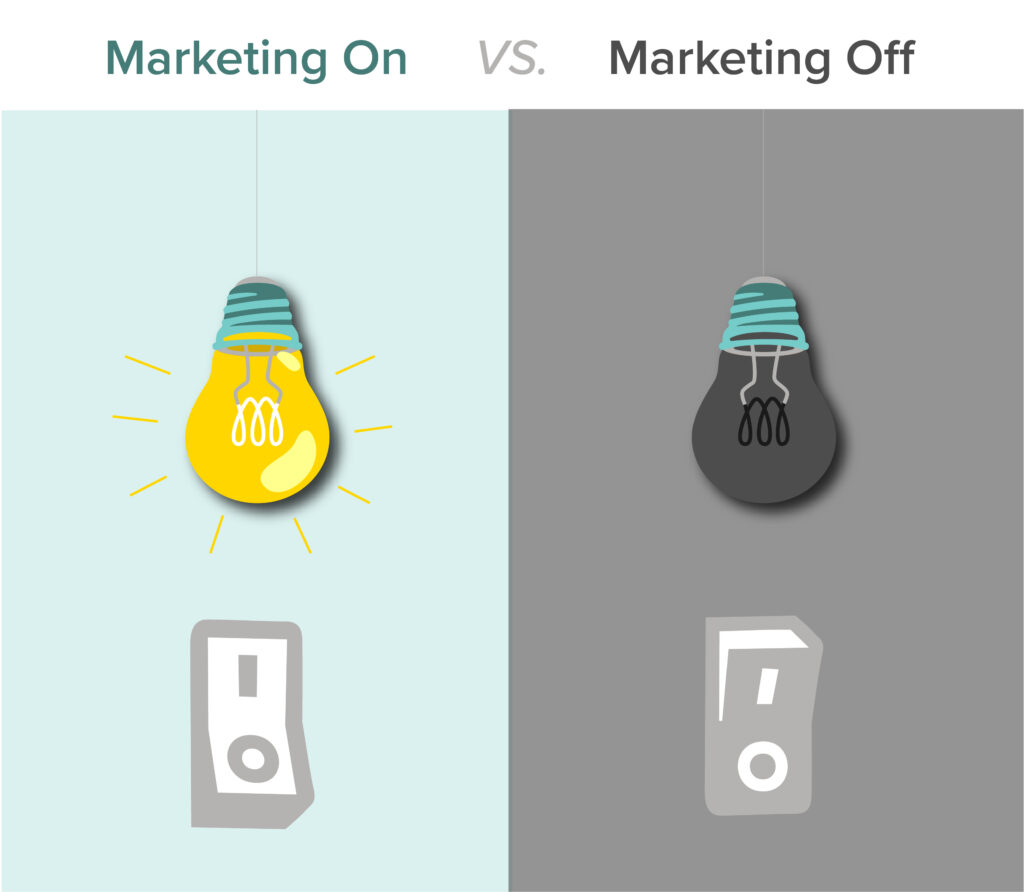Marketing Incrementality is not Marketing Attribution
02/24/2023
Author: Matt Voda, CEO of OptiMine
We recently saw an excellent post from marketing analytics expert Avinash Kaushik that explained the difference between marketing “incrementality” and marketing attribution. It resonated with us because there remains an undue focus in the marketing industry on user tracking and linking ads with outcomes using identity data. And this myopic focus, while several years ago was understandable, is now serving marketers and their decisions very poorly, especially as the tracking picture goes dark.
Taking a step back a bit, when OptiMine’s measurement solution is deployed for the brands we work with, one of the most awaited metrics the marketing team wants to know is what percent of sales are being driven by marketing- or “marketing contribution”. The interest stems from a few main reasons:
- The marketing team wants to know how their more difficult-to-measure channels are performing, mainly because these channels are getting missed by their web analytics (e.g. tracking) platforms. Low, or zero, click channels such as video or display show up poorly because consumers rarely click on the ads, and traditional media channels such as TV, OOH and print aren’t easily “trackable”. So, it is natural for brands to want to know how these areas perform within their mix.
- More importantly, marketing teams want to be able to prove the value of their efforts. This is especially true during periods of economic headwinds when marketing budgets are under significant pressure.
Proving Ad Value:
But this desire to “prove” value has led to an unhealthy reliance on “attribution” and has led to sub-optimal decisions on budget allocations. One could easily argue that Google has built an enormous business on the backs of this mindset with click-based tracking that “proves” that lower-funnel paid search ads drive the majority of digital sales for brands. And this same tracking mindset has driven gigantic- even herculean- efforts on the part of brands to stitch together identity data to “attribute” ads with conversions. Kaushik’s simple examples tell you everything you need to know about why this overreliance on “attribution” leads to bad outcomes.
The heart of the challenge with this tracking-based mindset is this:

Defining Incrementality:
By measuring the incremental contributions of marketing, one has to measure how much revenue would have been achieved if the brand hadn’t been running marketing. By understanding this, the marketing team can then isolate the incremental impacts that marketing is responsible for. This is the important question the smartest, and most courageous, teams ask, and it is probably also the question the finance team is focused on too.

What sales would you get anyway if marketing was turned off?
Defining Attribution:
Attribution on the other hand, is largely focused on connecting an ad view (or more commonly, ad clicks) with a conversion. This approach over-states the value of the ad impression and ignores many other factors that may have had more to do with sales revenue: seasonality, the economy, employment (and unemployment), promotional pricing, and so on. And with multi-touch attribution, the brand attempts to understand the sequence of the ads viewed to determine if the ad “path” drives conversions. This totally ignores the fact that marketers can’t really control the order that ads are seen.
What Marketing Attribution Misses:
With the total focus on matching an ad with a person (and device), marketing attribution misses a lot of really important things:
1. Non-digital advertising and its effects on conversions
For example, if you think that TV and Radio impact sales (they do), and your attribution is only looking at digital ads, you’ll get it wrong.
2. Non-digital conversions
If your business still has a large portion of non-digital converting activity (in-store, call center, sales team, branch locations, etc.) then your attribution is also missing these elements as well.
3. Non-marketing factors
Sales in your stores spike on Saturdays during the holiday season. Does that mean the ads that ran on Saturday magically got more effective? Probably not. Accounting for non-marketing factors such as the economy, competition, promotions, pricing discounts, and many other elements is critical to understanding how effective your marketing campaigns are. You’ll misstate the value of ads if you aren’t accounting for these elements.
4. Missing data
Privacy changes from Apple and upcoming changes from Google are causing the consumer data picture to go dark. Your attribution solution is missing a lot of data now, throwing a wrench into models’ accuracy.

The magical MTA path to purchase
The Marketing Attribution Drug is Hard to Quit:
Moving marketing measurement to an approach that measures incrementality is not difficult but is very hard for marketers to do. If you move from platforms- including those from Google, Meta and others- that tell you that marketing drives 80-100% of sales, to an approach that more accurately indicates that marketing really drives 30% of sales, this can be a daunting move. But it is absolutely, unequivocally the right move to make. The faster that a marketer shifts focus to decisions that actually impact the business, the faster the business improves. This is why measuring the incremental effects of marketing is so critical- it is focused on what marketing matters.
Side Note:
There are two ways to measure incrementality:
- A/B Testing (or Randomized Controlled Trial- “RCT”): At OptiMine we are big believers in testing, but the reality in today’s ecosystem is that you don’t need expensive software solutions to run tests. Virtually every platform on the planet now allows you to run A/B tests. Here’s a quick sampling of the A/B testing tools available across the major digital platforms, and they’re all free to use:
2. Marketing Mix Modeling- “MMM”: MMM examines ad campaigns over time to observe their incremental effects as the campaigns fluctuate. This is the approach OptiMine uses- at very high scale using advanced AI- to measure campaigns’ impacts across any online or offline conversion. MMM has been around for a good 40-50 years but advances in computing and AI have taken this traditional approach and scaled it for modern use. Also, MMM fills all of the gaps of MTA and can deliver much more robust planning tools.
Incrementality is the Key to Unlocking Optimization:
The beautiful thing about measuring the incremental effects of marketing is that once you have the measures, go-forward optimization will unlock huge value. Advanced optimization algorithms allow the marketer to run simulations, scenario plans, and what-if analyses, to find budget allocations that will drive the highest returns. And interestingly, these kinds of capabilities are most important when budgets are under reduction pressures. Consider why with a simple thought experiment:
Situation A: Your boss tells you to cut your budget by 10% and you are using a tracking-based approach that tells (incorrectly) that 100% of your revenues are driven by marketing.
Situation B: Your boss comes to you with the same demand, but now you are using a measurement approach that is able to isolate more accurately which campaigns are driving your revenue (and the solution is showing you the 30% of revenues and campaigns that are doing the heavy lifting).
Which approach will yield the best budget cut, and therefore, the best performance moving into the next budget period? You got it- Situation B. It is really easy to see why getting this right matters so much.

Courage (and Intelligence) Matters:
Shifting the mindset away from tracking and attribution is essential for your future marketing success, and while it takes some courage, it is the right thing to do for your brand. And in doing so, marketers can unlock even more performance by utilizing advanced optimization that isn’t possible without a focus on incrementality.

